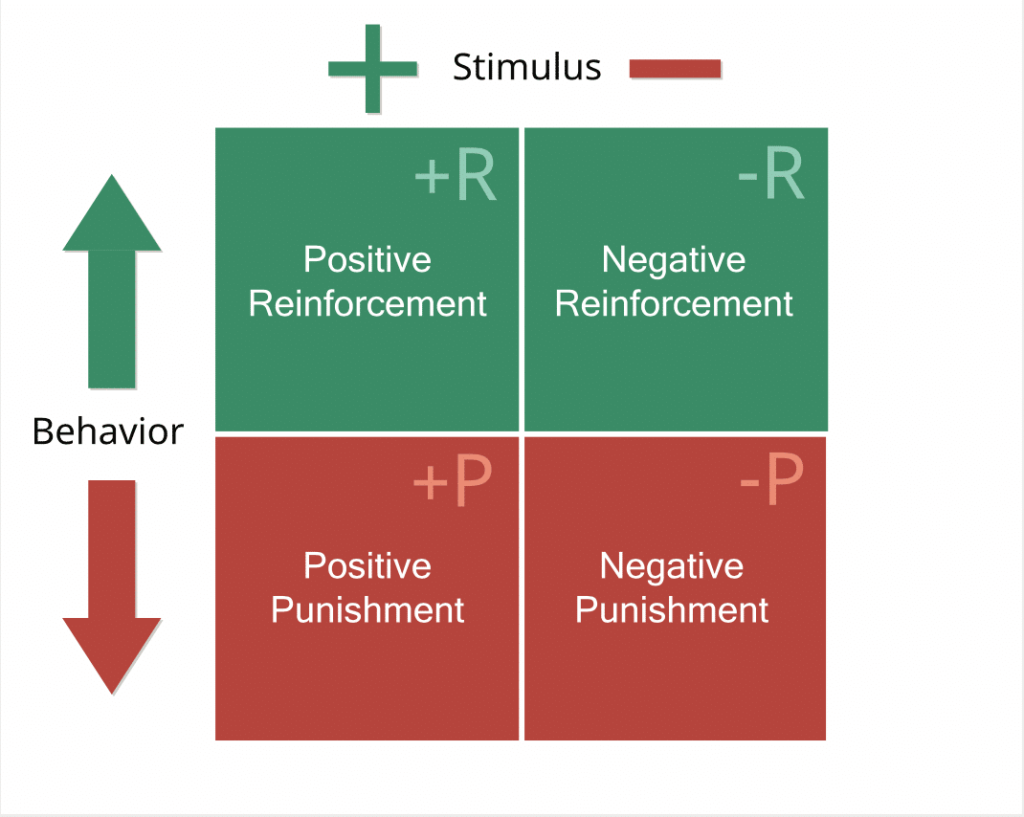
Behavioral development positive reinforcement chart Sanity Savers
Positive punishment, on the other hand, adds an undesirable consequence that decreases a behavior. Rewarding a child with their favorite candy for cleaning up their mess is an example of positive reinforcement. Spanking is an example of a positive punishment. (Remember, this does not mean that 'positive' means good.)

Positive Reinforcement Chart Reinforcement chart, Math time, Positive
Positive reinforcement occurs when a certain behavior results in a positive outcome, making the behavior likely to be repeated in the future. This behavioral psychology concept can be used to teach and strengthen behaviors. This article discusses how positive reinforcement works and how it can be used to teach or modify behaviors.

Color Behavior Chart to Reinforce Good Behavior! by Mommy Go Lucky
Positive reinforcement is the act of rewarding or praising the positive behaviors in an attempt to change, avoid, or completely stop the negative behaviors. Just like any other picture board set up, such as Reminder Boards, a positive reinforcement chart is personalized for each individual. More options Copy This Storyboard

Create your own Positive Reinforcement Chart for your class using
Giving a thumbs-up. Offering a special activity, like playing a game or reading a book together. Offering praise. Telling another adult how proud you are of your child's behavior while your child is listening. You can also offer positive reinforcement by giving a child extra privileges or tangible rewards.

Pin on Online Resources & Tools
Positive reinforcement is a powerful tool in shaping behavior. It involves the introduction of a desirable or pleasant stimulus after a behavior, which reinforces the behavior and makes it more likely to reoccur. This concept is widely used in psychology and applies to many areas of life, from parenting to workplace management.

Negative reinforcement is misunderstood.
Positive reinforcement refers to the introduction of desirable or pleasant stimuli after the performance of a behavior. This reward can be used to further encourage that behavior, or change a pre-existing one. There are four types of positive reinforcers: natural, tangible, social, and token.

Teaching Your Toddler Proper Behavior With Positive Reinforcement
Focus on Positive Reinforcement Instead of Shame Before we jump into specifics on how to use a behavior chart to encourage good behavior, it is important to talk about the difference between positive reinforcement and shame based systems. Behavior charts can tend to become full of shame - especially in a public setting like a classroom.

Positive Reinforcement Pocket Chart
Define operant conditioning Explain the difference between reinforcement and punishment Distinguish between reinforcement schedules The previous section of this chapter focused on the type of associative learning known as classical conditioning.

17 Best images about Positive reinforcement on Pinterest Kids charts
All reinforcers (positive or negative) increase the likelihood of a behavioral response. All punishers (positive or negative) decrease the likelihood of a behavioral response. Now let's combine these four terms: positive reinforcement, negative reinforcement, positive punishment, and negative punishment (Table 1). Reinforcement

Positive Reinforcement Chart for Children a todo list for Etsy
Positive reinforcement is an aspect of the construct of Operant Conditioning that was developed by B. F. Skinner (Cherry, 2018). Skinner studied rats, and he found that if the rats consistently pressed a bar which then administered food to the rat, the rat would press the bar more and more in order to get the food reward.

Teaching Your Toddler Proper Behavior With Positive Reinforcement
Positive reinforcement can be used to encourage behaviors we want to increase, like your child cleaning her teeth without a fuss, or to reward your child for practicing new skills and can encourage him to continue, like tying his shoes or loading a dishwasher. Long-Lasting Positive Reinforcement

Kindy Garden Positive Reinforcement Using Reward Charts to Encourage
Positive reinforcement is the addition of a stimulus to create the desired behavior. In the 1930s, B.F. Skinner conducted a series of experiments on rats and pigeons. He concluded that humans could learn to complete the desired behavior just as pigeons learned to turn in a circle or peck a disc at timed intervals.

Positive Reinforcement In The Workplace slide share
Positive Reinforcement Through Rewards Some children need more than recognition and praise for good behavior. Sometimes, rewards can help. This is especially true once you have clearly defined the specific, positive behavior goals you expect from your child. Consider these tips to help reinforce behavior goals for your child:

Image result for behavior positive feedback for kids Positive
Positive reinforcement is a means of identifying and teaching a specific behavior to a student with the intention of seeing an increase in the desired behavior (Alberto & Troutman, 2012). This strategy has been demonstrated as an effective strategy for students with learning disabilities (Harwell & Jackson, 2014).

Reward Charts for Kids A Positive Reinforcement System Caroline
Positive reinforcement is anything that occurs after a behavior that increases the likelihood that the behavior will reoccur. Many teachers do not believe in positive reinforcement because they do not want to reward students for just doing what is expected. This attitude is unfortunate.

4 Important Tips for Using Positive Reinforcement Charts for Kids in
Positive reinforcement refers to the introduction of a desirable or pleasant stimulus after a behavior. The desirable stimulus reinforces the behavior, making it more likely that the behavior will reoccur.